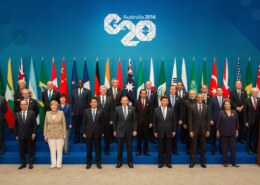Analyze the effects of India’s agricultural reforms, such as the three farm laws’ implementation and repeal, on farmers’ livelihoods, agricultural productivity, and the nation’s overall food security and food systems’ resilience.
The debate between economic growth and environmental protection in developing countries is complex and essential . On one hand, economic growth is essential for improving living standards, reducing poverty, and providing better infrastructure, education, and healthcare. Many developing nations relyRead more
The debate between economic growth and environmental protection in developing countries is complex and essential . On one hand, economic growth is essential for improving living standards, reducing poverty, and providing better infrastructure, education, and healthcare. Many developing nations rely on industrialization, urbanization, and exploitation of natural resources to fuel this growth. This often comes at the cost of environmental degradation, including deforestation, air and water pollution, and loss of biodiversity. On the other hand, environmental protection is crucial for ensuring long-term sustainability and the health of populations. Developing countries face the challenge of balancing these competing priorities. A focus only on economic growth can lead to severe environmental damage, which in turn can undermine future economic prospects by depleting natural resources and causing health problems. Likewise , stringent environmental regulations can hinder economic development by increasing costs and limiting industrial activities. So, the solution lies in adopting a sustainable development model that integrates economic growth with environmental stewardship. This includes investing in green technologies, enforcing environmental regulations, and promoting practices that minimize ecological footprints. International support, through financial aid and technology transfer, is also important to help developing countries achieve this balance.
See less

Implications of Rising Income Inequality and Wealth Disparity in India 1. Current Trends in Income Inequality and Wealth Disparity Rising Income Inequality Statistics: Income inequality in India has been increasing. According to the World Inequality Report 2022, the top 1% of earners in India controRead more
Implications of Rising Income Inequality and Wealth Disparity in India
1. Current Trends in Income Inequality and Wealth Disparity
Rising Income Inequality
Wealth Disparity
Implications of Rising Inequality
Economic Impact
Social Impact
2. Government Efforts to Address Inequality
Pradhan Mantri Jan Dhan Yojana (PMJDY)
Objective and Achievements
Impact
Goods and Services Tax (GST)
Objective and Achievements
Impact
3. Challenges and Limitations
PMJDY
GST
4. Recommendations for Improvement
Enhancing Financial Inclusion
Reforming GST
5. Conclusion
Rising income inequality and wealth disparity in India have significant economic and social implications, affecting consumption patterns, social stability, and overall economic growth. The government’s efforts through initiatives like the Pradhan Mantri Jan Dhan Yojana and the Goods and Services Tax aim to address these challenges by improving financial inclusion and creating a more equitable tax system. However, challenges remain in the implementation and effectiveness of these programs. Addressing these issues through targeted reforms and enhanced support can help in better achieving the goal of reducing inequality and promoting inclusive growth.
See less